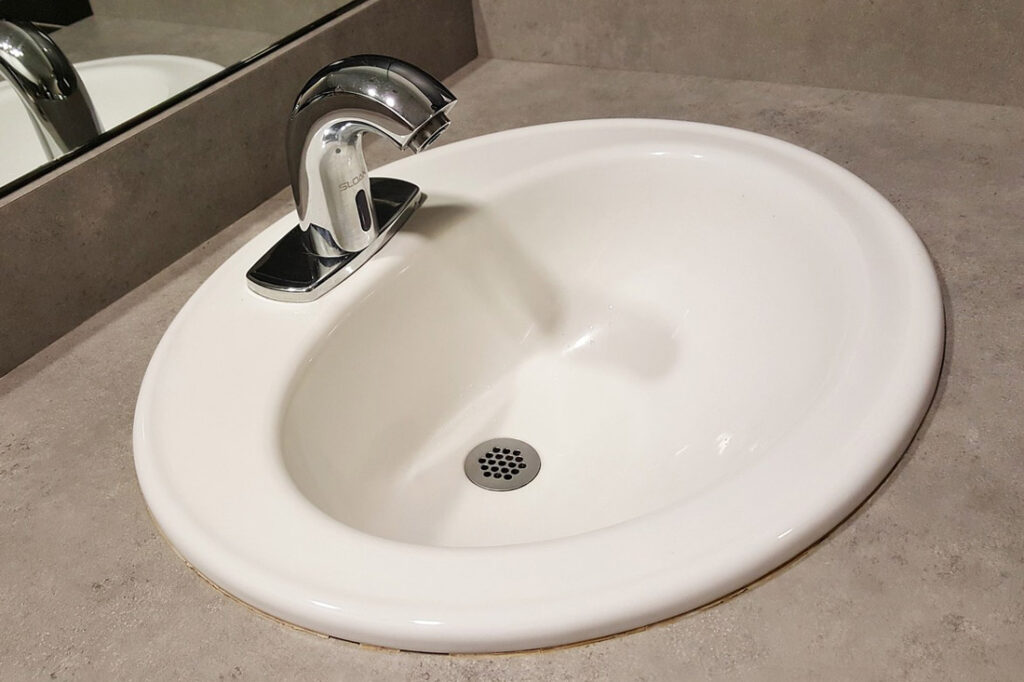Please note: This post is intended to educate cat parents with declawed cats but we do not support declawing cats. Still, it's a complex topic and if you want to learn more about both sides of the argument, I highly recommend this article from the BBC.
If you're the cat parent to a declawed cat you may have seen a peculiar thing…your cat saunters up to the corner of the couch or scratching post and begins “scratching” the same way they would if they had claws.
What's going on here? Why do declawed cats still scratch? Does that mean that declawed cats still need scratching posts?
Declawed cats can still enjoy and benefit from scratching posts even without claws. Cats have scent glands in their paws and scratching helps cats mark their territory. Scratching behavior is also a deeply rooted part of feline behavior and declawed cats still have this instinct. It's also a good stretch!
Even without claws, cats still enjoy the process of scratching since it satisfies such a deep-rooted instinct! So yes, even declawed cats should have access to a scratching post or something similar to scratch on.
Why Do Declawed Cats Still Scratch?
When we humans look at cat scratching for its face value it doesn't make any sense why a declawed cat would scratch anything. And it certainly doesn't seem like a declawed cat would need a scratching post.
But there's a lot more to scratching than meets the (human) eye.
So let's take a closer look at the reasons why declawed cats still scratch, starting with the most likely explanation.
Reason 1: Your Cat Is Marking Their Turf
Cats are naturally territorial creatures and your little housecat's wild ancestors or feral friend would have bravely controlled a territory roughly the size of 20 city blocks. As the experts at the International Cat Care Society point out, cats “mark their territories using scent derived from facial glands, urine, feces, and anal glands. This territorial marking, together with the extremely sensitive sense of smell, helps cats to communicate effectively and to minimize direct conflict between themselves.”
So where does scratching come into the picture?
Your cat also has special scent glands on their paws and the act of scratching (even without claws) can deposit those scents. So even though declawed cats don't have to sharpen their nails or generally keep them trim with scratching, they still have to let the world know that your house is their turf!
This also helps explain why the corner of the couch is such a popular (and often problematic) area for cats to scratch. Furniture not only has great scratchable fabric and the perfect height to stretch into but it's also an interesting repository for scents! You and any guests to your home are likely to sit on the couch for long enough to thoroughly place a unique scent there. Your cat's powerful sense of smell catches all this and wants to make sure that their scent is a part of this socially significant area of the home!
Reason 2: Instinct
Your cat has a couple of million years of instinct driving their urge to scratch and simply removing their claws (or spraying them with some water) isn't likely to change that. Declawed cat's don't have to explain why they're scratching the furniture or a post- they probably just feel the urge to do it. Scratching has helped cats survive by establishing clear lines of territory and keeping claws sharp.
Even without claws, they get other types of positive reinforcement for scratching that keeps them going. Just check out one of your cat's Felidae family members using an entire tree as their scratching post:
Reason 3: It's A Good Stretch
You go to yoga and your cat goes to the nearest scratching post (or couch) to get a good stretch! But seriously, if you ever watched your cat scratch (declawed or not) you've probably noticed that what starts as a scratch seems sometimes turns into a deep stretch that they really lean into!
It's just another way that scratching isn't just scratching! Not only is stretching practical but it also just feels good and keeps your declawed cat coming back for more!
Reason 4: It's Relaxing
Sometimes behavior like grooming and scratching are done to calm and soothe your cat more than anything else. Hill's explains that during moments of confrontation or anxiety cats may suddenly start grooming. To some humans, this might look like our cats are so unphased by whatever is in front of them that they'd rather get a quick grooming session in but it can actually mean quite the opposite. As Dr. Lisa Maciorakowski explains “Since grooming releases endorphins (hormones that make the cat happy), they will often partake in this pleasurable and relaxing ritual to help calm themselves.”
The same could be said of scratching and declawed cats may perform their scratching routine because they find the behavior soothing and calming- even without the claws.
Reason 5: Habit
While many cats get declawed as kittens some don't experience the surgery until they're adults. Many veterinarians combine declawing with a spay or neuter surgery and while these procedures can be done at 8 weeks many veterinarians prefer to wait until 6 months. That leaves plenty of time for kittens and young cats to develop the scratching habit.
Of course, habit isn't the primary driver that moves declawed cats to keep scratching but combined with all the other explanations it can certainly be a factor.
Reason 6: It's How They Get Out Their Energy
Some cat parents may have noticed that their cats like to run to the scratching post or couch corner when they get home.
While some cats may experience a full-blown case of the zoomies or show off their favorite flop technique, other cats find the scratching post a great way to get out the extra excitement that builds up when their human comes home! After all, scratching, even for declawed cats, is a great way to get in a good stretch and some exercise after napping and grooming all day.
This might sound like a bit of a stretch to some folks, but the zoomies, or an excess of energy, are certainly a real thing and the scientific name is frenetic random activity periods or FRAPS. While most people aren't going to have any idea what you're talking about if you explain that your cat is dealing with FRAPS (in fact, they'll probably get the wrong idea) the zoomies are something that almost every cat parent can relate to and scratching is one of the many ways that cats deal with this extra energy.
Do Declawed Cats Still Need Scratching Posts?
Yes, absolutely! As we've seen, the process of scratching does a heck of a lot more than just sharpen claws and there are plenty of benefits even for the declawed feline.
But what kind of scratching post should a declawed cat have?
While it might be tempting to just let your declawed cat have free reign of the couch corner, studies suggest that cats really do prefer the very popular rope-based scratching posts. While I couldn't find any research that specifically reviewed the preferences of declawed cats, it's fair to assume there's not much difference.
One of the best options is this simple (and budget-friendly) scratching post on Amazon. It's tall enough for most cats at almost 2 and a half feet but isn't going to take up the entire room. It's also backed by several hundred five-star reviews from happy cat parents. You can check out the latest price on Amazon by clicking here.
Do Declawed Cats Need Cat Trees?
While most declawed cats can certainly benefit from cat trees, it's more important to consider their needs! Cats need an area they can call their own, a place to climb, and of course a place to scratch. If you already have all that in your home then you're ahead of the game!
But if you're missing an appropriate space for cats to act on those instincts then a cat tree usually makes the most sense. If you're interested, you can check out my list of the best cat trees for declawed felines to get some ideas of what will work in your house.
Closing Thoughts
While it might be surprising to realize that declawed cats should still have a scratching post, if we really get into the feline mind it starts to make perfect sense. Millions of years of evolution are driving our cats to scratch- with or without claws!
Read Next: Can Declawed Cats Climb Trees Or Fences?





